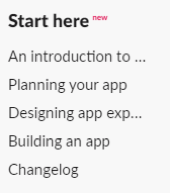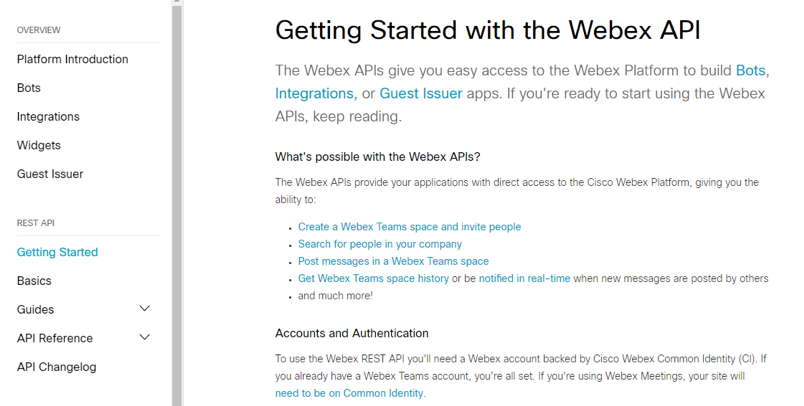Editor’s note: Mio thought-leadership article on API Best Practices
You don’t want one-size-fits-all technology anymore. Instead, you want tools and services that adapt to suit your preferences, processes, and goals.
Is this too much to ask?
At Mio, the answer is absolutely not.
APIs are at the heart of that versatility. So in this post, we cover 3 API best practices.
Start with good documentation
Documentation may not be the most exciting part of building an API.
However, if you want anyone to use your tools, you need documentation to show them what’s possible.
Documentation is your API glue.
So, what separates excellent documentation from a basic set of files?
Often, the answer is actionable insights. Rather than just telling people what they can do with your API, introduce them to the benefits of your solution with tutorials, usage examples, and guides.
Look at team collaboration app Slack’s API, for instance. If you visit their API documentation, you’ll find a quick-start section where you can see introductory information about the code.
There’s also in-depth overviews of each individual part of the API, like messaging features, how to create workflows, and more.
Let people experiment with your API through immersive tutorials and overviews, so that they can start to experience the benefits for themselves.
Once you’re done building your documentation, test it by sending it to developers in your network, and seeing what they can create using your guidance alone.
Ease adoption by focusing on simplicity
Just because there’s more sophisticated software and tools in the world today, doesn’t mean that we want our tech stacks to be more complicated. Most developers are looking for the exact opposite.
Your users don’t want a crazy custom URL scheme to figure out before they can manage a web API. They don’t want you to reinvent JSON and REST guidelines so that they need to start learning from scratch. Instead, developers want something simple, straightforward, and adaptable.
Look at how Cisco Webex introduces its API to developers:
There’s no complicated coding or additional lessons required.
Cisco’s API is “REST” based, which means that it operates a well-known format. Additionally, there are language-specific libraries available on the Cisco website to help people interface with the service.
If you need help creating a library, tools like Alpaca, and Apache Thrift can generate library documentations automatically on your behalf.
If you’re not offering an open-source API scheme, make sure that even signing up for your solution is simple.
The less stress involved in each step of interacting with your API, the better.
Keep your APIs flexible
Each part of your API must be consistent and stable. But also flexible.
Sounds tricky, right?
You’ll need a few guiding principles in place to stop your code from falling apart whilst achieving this.
Consider how diverse the current technology marketplace is. Everyone has a unique tech stack, featuring hybrid cloud deployments, specific software, and integrated hardware. No two businesses alike, and internally, all companies are growing more complex. For instance, 91% of companies are using at least two messaging apps to communicate.
Your APIs need to adhere to this environment where one-size-fits-all doesn’t work anymore.
Allow for variety in your input and output constraints.
Don’t just support XML and POST.
Consider JSON and other options too.
Rather than assuming everyone shares the same technical preferences as you, create an environment where anyone can take advantage of your API.
For instance, Slack’s API comes with a range of libraries, tools, and assets for developers from different backgrounds.
Succeeding with APIs
APIs offer an incredible way for developers to eliminate silos in the workplace and improve the way that various tools work together.
However, like any innovative new technology, you’ll need to know how to use these programming interfaces correctly if you want to take advantage of them.
Only with the right documentation, simplicity, and flexibility can APIs give developers the functionality they need.
For instance, Mio uses syncing technology to help thousands of people stay connected, even in a world where multiple chat tools exist within the same office environment.
Learn more about Mio at https://m.io and follow them on Twitter at @Mio.
Check out TADSummit Americas, 15-16 October, Chicago at http://www.tadsummit.com/2019/americas/
Follow TADSummit on Twitter @TADSummit.





